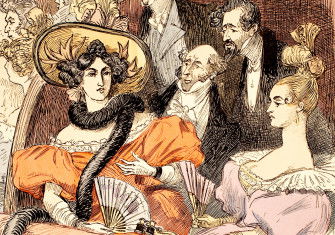Opera for the Ordinary
Despite popular misconceptions and its aristocratic origins, for part of its history opera was inextricably linked with popular culture – no more so than in the 1920s.

In contemporary Britain, both the broadsheet and tabloid press routinely stereotype opera as ‘elitist’. On the rare occasions when opera singers are interviewed on breakfast television or radio, they are invariably asked to defend their art against the dreaded ‘e-word’. The cliché evokes certain key themes: that opera is posh, expensive and removed from real life. It is routinely characterised as a pursuit for the privileged: boozy corporate sponsors who listen to fat, horn-helmeted ladies in opulent surroundings but care little for the music. The supposed tension between the ‘aloofness’ of opera and the ‘authenticity’ of everyday life provides fodder for parody but is a turn-off for potential new audiences.






